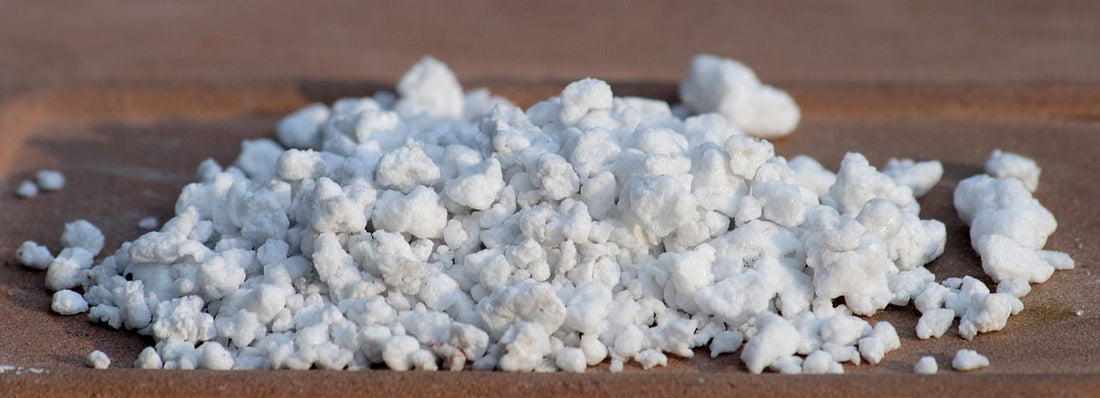
What is perlite and how to use it?
It is a white, spherical substrate that is used as an additive in various soil and coconut substrate mixes. The small white balls often seen in commercial soil mixes are actually perlite. It is valued above all for its ability to retain moisture, oxygen and nutrients - key qualities for plant health.
Origin and characteristics of perlite
It is mined from a volcanic glass called obsidian. When the lava cools quickly, obsidian with a deep black color is formed. When this obsidian is heated to temperatures above 800 degrees Celsius, the moisture in it causes it to expand, making it the hero of this article. This process increases its volume up to 16 times, creating a snow-white, lightweight material. The expansion generates pores on the surface of the substrate, which are essential for moisture retention. Once expanded, perlite becomes extremely light, making it easier to mix with soil.
The agroperlite that we use in gardening has the ability to drain groundwater and retain a minimum amount of moisture that is sufficient for the needs of the plants. Thus, the risk of disease due to excessive watering is reduced. In addition, agroperlite provides oxygen to both plants and beneficial microorganisms in the soil, preventing it from compacting into a hard, water- and air-impermeable mass. In this regard, see our article on mycorrhiza .
Types of perlite
• Coarse : Recommended for its high oxygen content, coarse perlite is ideal for plants grown in pots and larger containers. It prevents soil compaction, allowing better air circulation and water drainage.
• Fine : Used in finely ground soil mixtures intended mainly for the germination and rooting of cuttings.
How to use perlite
It is added to the soil mix to improve structure and drainage. It is particularly useful in potting mixes where improved root aeration is critical. Generally, the recommended ratio of perlite in the soil mixture is from 10% to 40%, depending on the needs of the specific plants and growing conditions.
You can mix with soil mixes as well as with our coconut selection.
Perlite can be added to the bottom of the pot to improve drainage. Good thing it's relatively cheap.
It can also be grown in hydroponics with only agroperlite. The pH value should be between 5.5 and 6.5 and the electrical conductivity (EC) depends on the growth phase of the plants. The water temperature should be within 19-21 degrees Celsius. In this case, agroperlite stimulates the roots to develop faster, which allows the plant to be pruned and transplanted more often.
Where can I buy perlite?
From us, of course. Plagron's perlite is RHP certified and comes ready to use. Available now.
